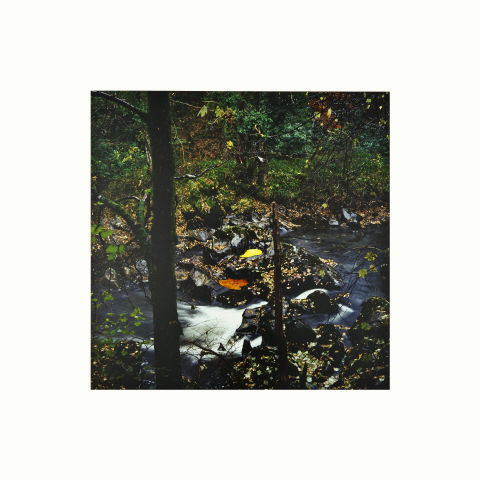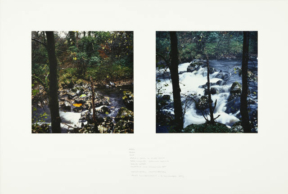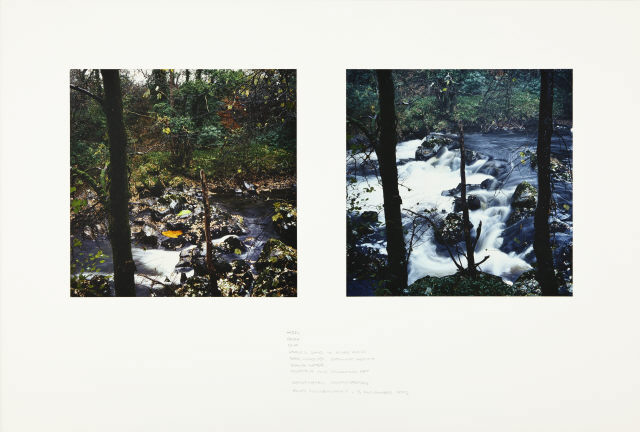
- 1993
- Photographic paper
- Photography
- Inv. 95FE65
Andy Goldsworthy
Leaves Laid in River Pools, Scaur Water
Often referred to as a land artist, Andy Goldsworthy creates works which are the result of a direct relationship with nature and which are composed of natural materials gathered in the location in which he intervenes. Serving as the basis for a system of reconfiguration and transformation, stones, leaves, flowers, pine cones, snow, earth, mud and sand are thus some of the materials the artist has repeatedly worked with. His compositions are not however intended to alter the landscape in which they are situated, since they are ephemeral acts, initially formalised by the artist but subsequently, in a process of erosion, completed by the activity of nature. Like the natural elements that characterise the site of intervention, or indeed the atmospheric conditions in which this takes place, the unfolding of time is therefore seen as an essential vector for the creation of the work – which in reality is only fully completed when it disappears, when the action of the artist is eroded, leaving the landscape unaltered.
In this context, the photograph is not only a document which preserves the artistic intervention, but also a witness to the role of nature itself, thus demanding that the work be recorded at different moments. This importance of revealing the work through a temporal development – of conveying its evolution – is what we observe in the two elements that comprise Leaves Laid in River Pools, Scaur Water, a pair of photographs that document an action Andy Goldsworthy carried out on 3 November 1993 in Dumfriesshire, Scotland, beside Scaur Water, and which consisted of the arrangement of groups of identically coloured leaves in the natural pools at the edges of this river.
Thus whilst the first element consists of an isolated photograph which records the most intense moment, in which the artist has finished playing his part and nature takes over, the second element is composed of two photographs. The first was taken a day later, and which leaves open the question of whether the artist intervened again on his return; the second, whose time of recording is not identified, reveals the same location now bereft of any trace of the act which took place, completing a natural cycle.
MBA
October 2011
| Type | Value | Unit | Section |
| Height | 83,6 | cm | |
| Width | 55,9 | cm | |
| Height | 49,2 | cm | |
| Height | 25,2 | cm | |
| Width | 72,3 | cm | |
| Width | 49,4 | cm | |
| Width | 82,5 | cm | |
| Height | 49,5 | cm |
| Type | Acquisition |

